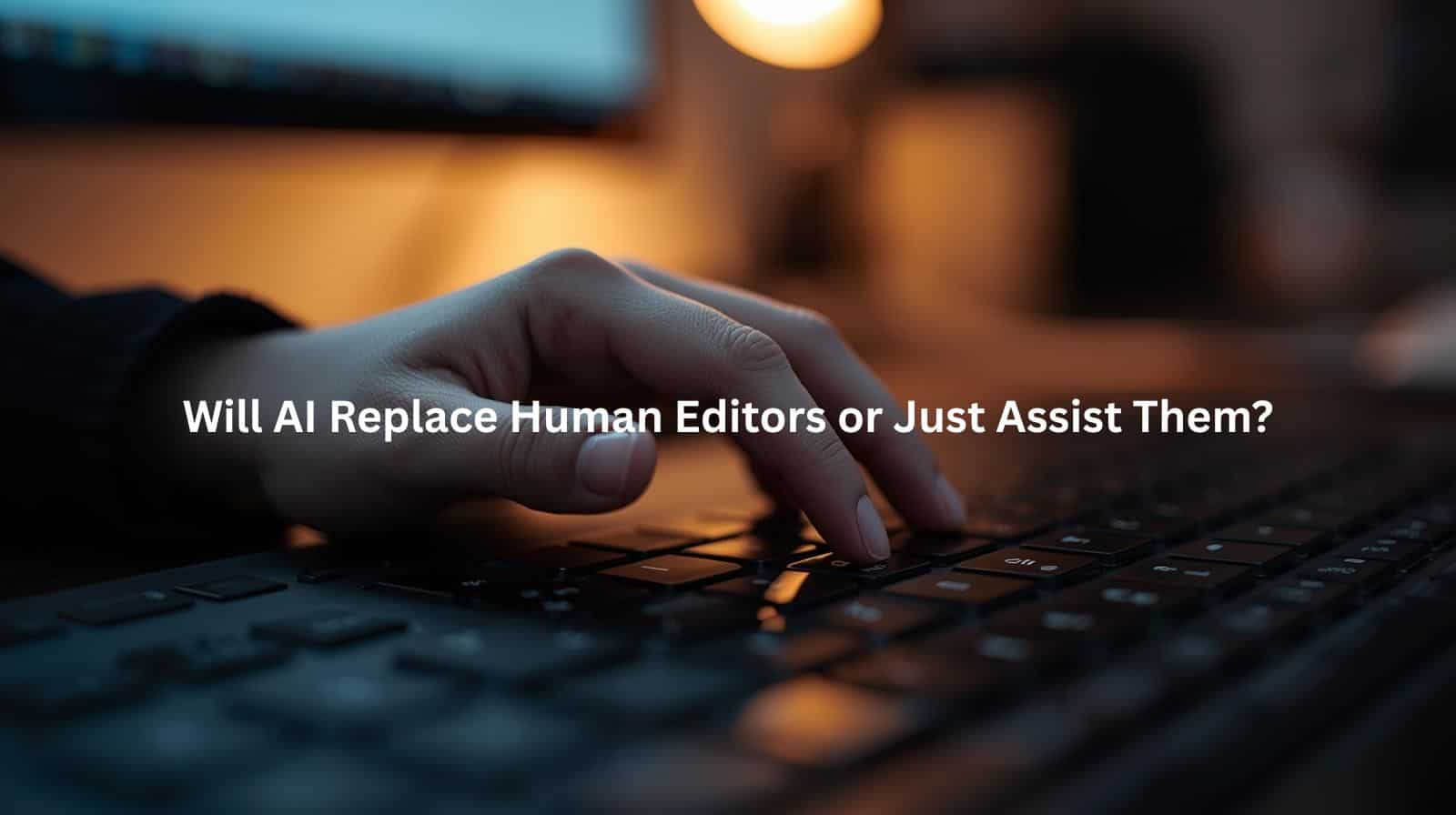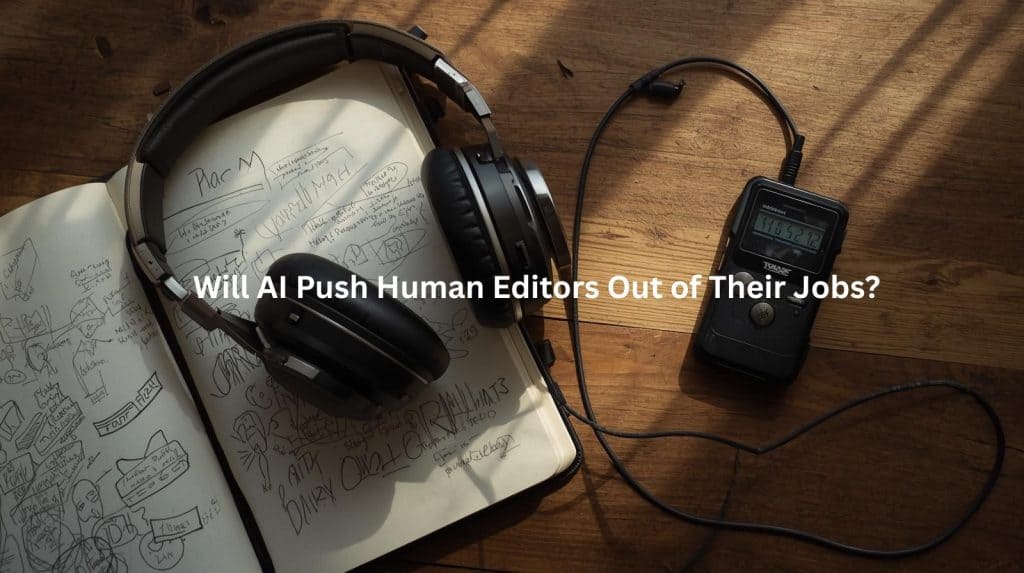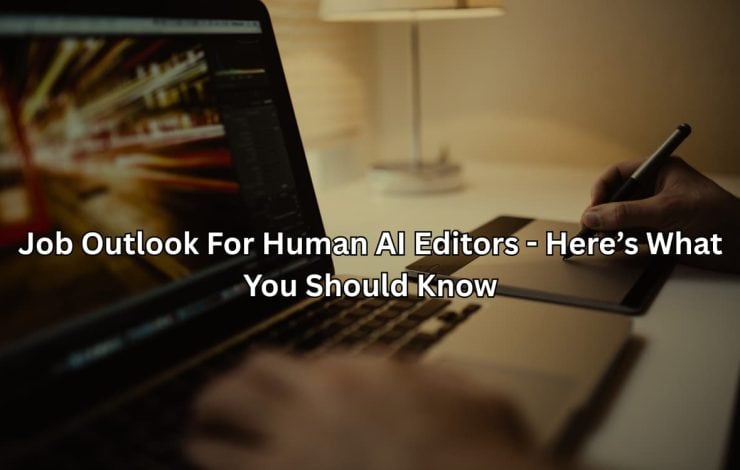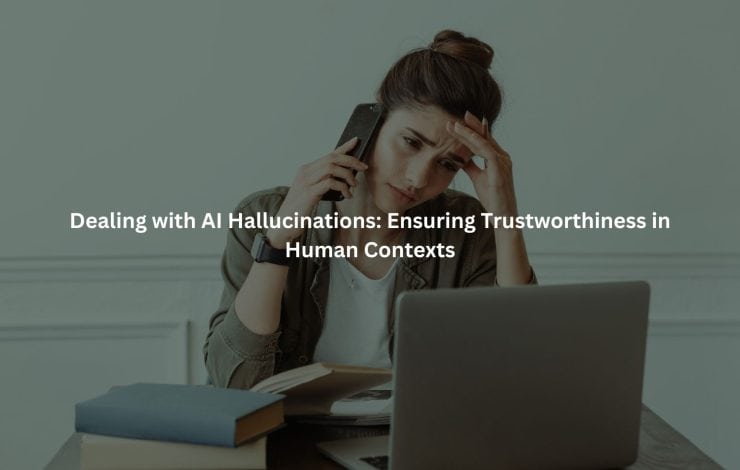Will AI replace human editors? Not anytime soon. AI editing tools aren’t taking over; they’re just really good at the boring stuff. At Jet Digital Pro, they’ve become our go-to for catching typos and fixing grammar in seconds flat.
But here’s the catch: no machine can capture an author’s personality or sense when a sentence just doesn’t sound right to human ears. Every time we think AI’s got it all figured out, some cultural reference or subtle meaning slips right past its digital brain.
That’s why the real story isn’t about machines replacing people. It’s about how we’re making AI and human editors work together instead of fighting for the same job.
Key takeaways
- AI handles the grunt work like a champ. Fixing grammar and typos faster than any human could dream of
- You can’t program human judgment or gut instinct. Editors catch things machines miss every single time
- The magic happens when editors let AI do the heavy lifting while they focus on making content actually connect with readers
Will AI Push Human Editors Out of Their Jobs?
The numbers are impressive. AI can spot a misplaced comma in milliseconds while human editors might need a coffee break first. At Jet Digital Pro, we’ve watched these fancy language models get better every month, and yeah, sometimes it feels like they’re gunning for our jobs.
They don’t need sleep, don’t
ask for raises, and can tear through a 10,000 word document before lunch. But here’s what actually happens in the real world: every time we let AI loose on a piece of content, it misses something. Proof that even the most advanced ai writer still needs a human touch.
Maybe it’s the way a sentence hits wrong (even though it’s technically perfect), or how it completely whiffs on picking up sarcasm. There’s always something that makes us glad we didn’t just hit “auto-edit” and call it a day.
We’ve figured out something pretty basic. AI’s not here to steal our red pens, it’s here to let us focus on the stuff that matters. While the machines handle the grammar police work, we’re free to dig into what makes writing actually work: the flow, the voice, the little details that make readers stick around.
That’s exactly how we do things here. Let the robots do their thing, then have real humans make sure it actually sounds like it was written by, well, a human.
What Can AI Really Do in Editing?
Remember how much everyone hated fixing comma splices in college? Well, AI just made that part of editing way less painful. It catches all those annoying little mistakes that used to drive us crazy. Their, there, they’re… done in seconds.
The weird part is watching it work with audio and video stuff too. Cleans up background noise, spots weird things in frame. Used to take forever to do that by hand. Now it’s like having a super fast assistant who never needs coffee breaks.
But here’s where it gets interesting. Give AI a stack of 500 blog posts to check for consistency and it’ll power through without complaining. Never gets tired. Never misses things cause it’s thinking about what’s for lunch. Our error rates dropped so much since we started using it, it’s actually kind of crazy.
Sometimes AI surprises us though. It’s pretty good at looking at how articles flow, checking basic facts, that kind of thing. Like having a really smart first reader who can tell you if something’s off. Still gotta check their work though. Cause computers, right?
Turns out the secret isn’t letting AI do everything. It’s letting it handle all the boring stuff while we focus on making words actually mean something to real people. Simple as that. That balance. Humans bringing creativity and machines handle grunt work. Shows the role and value of human-AI content editors in modern publishing.
What Makes Human Editors Special?
Those little gut feelings make all the difference. While AI’s busy checking grammar, human editors pick up on the stuff that’s harder to measure. At Jet Digital Pro, we’ve watched our editors catch things no algorithm could spot, like when a perfectly correct sentence just feels wrong.
They know when to break the rules for style, when to keep a writer’s quirky phrases, and when something needs a complete overhaul. And then there’s the whole cultural thing.
Computers don’t get jokes, they don’t understand why some words might offend people, and they definitely can’t tell when something’s going to start a Twitter storm, and the public still isn’t fully comfortable: only about 36% of people say they’re comfortable with news made by humans with AI help.(1)
Our editors are like content bodyguards, making sure nothing inappropriate sneaks through. Sometimes it’s obvious stuff, but usually it’s those subtle things that could rub readers the wrong way.
But here’s what really matters. Human editors actually care about the readers. They’ll sit there wondering “Will people get this?” or “Does this make sense?” or even “Is this boring?” That’s something AI just can’t do. Sure, it can tell you if your grammar’s perfect, but it won’t tell you if your article’s going to put people to sleep.
It’s kinda funny, really. The more AI tools we get, the more we realize how much we need actual humans making the final calls. Because at the end of the day, we’re writing for people, not robots.
Making AI Work in the Editor’s Room
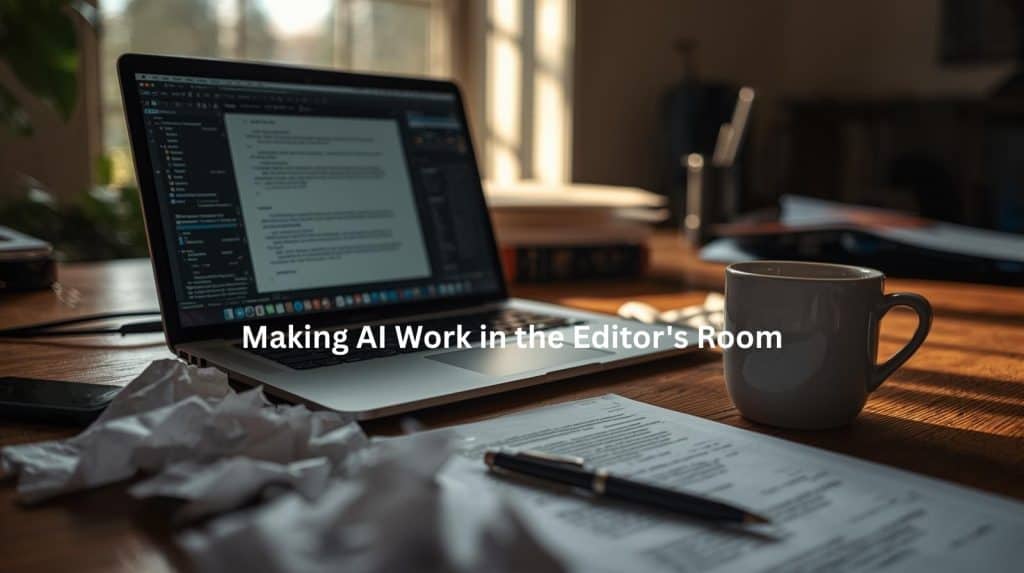
Those red squiggles in
Word used to feel like magic. Now they seem pretty basic compared to what we’re doing at Jet Digital Pro. Our editors spend their days working alongside AI tools that handle the tedious stuff. The boring parts. All that mind numbing checking and rechecking.
Computers mess up in the weirdest ways though. Like yesterday, when the AI tried fixing a perfectly good metaphor because it didn’t follow some rule buried in its code. That’s usually when someone on our team steps in, rolls their eyes, and fixes what the machine broke.
Nobody exactly jumped for joy about learning all this new tech. Some of us probably complained a bit too much. But we figured it out. Had to really. These programs are like that one really literal friend who never gets sarcasm.
Gotta admit though. It works out okay most days. The team stopped treating AI like some kind of enemy and started treating it more like a helpful intern. Sure, sometimes it suggests something so ridiculous we end up sharing screenshots in the group chat. But whatever.
Look, writing needs soul. Can’t get that from a computer. Never will. We just let the machines handle the boring stuff while we focus on making words that actually matter. That’s really the difference when you compare a human-AI editor vs AI software.
Where’s This Whole AI and Human Editing Thing Headed?

When Two Become One
Are You a Digital Agency?
White Label SEO Content Services for Agencies
Scalable, customizable, and results-driven content solutions for your clients.
Looking at how things are going at Jet Digital Pro (and pretty much everywhere else), it’s pretty clear. AI and human editors aren’t fighting for the same job anymore. They’re more like dance partners. In fact, 78% of organizations now say they use AI in at least one business function, showing how common AI tools have become in everyday workflows.(2)
AI catches all the little mistakes at lightning speed, while human editors make sure the writing actually means something. Together, they’re getting better results than either could alone.
What AI Just Can’t Do
Sure, AI’s impressive, but try getting it to understand why a joke might offend someone or why certain phrases don’t work in different cultures. It’s like trying to teach a calculator to understand sarcasm, ain’t gonna happen. The machines might be fast, but they’re still missing that human spark that makes good writing great.
New Ways to Be an Editor
Being an editor in 2025 looks pretty different from just five years ago. Instead of just red-penning drafts, editors are more like conductors now, orchestrating AI tools while keeping an eye on the big picture.
Here’s how top editors are making it work:
- AI for the heavy lifting → consistency checks, grammar, formatting
- Humans for nuance → spotting tone issues, cultural context, and subtle meaning
- Blended workflow → AI clears the clutter so editors focus on connection
The ones who’re really crushing it? They’re the editors who’ve figured out how to let AI handle the grunt work while they concentrate on making content that actually connects. At our shop, we’ve seen it firsthand.
Let the robots handle the basics while humans make sure everything hits just right. The whole editing game’s changing, but one thing’s staying the same: you still need that human touch to make writing worth reading.
FAQ
How do ai tools and ai models change the editing process?
AI tools and AI models can handle surface-level fixes like correcting grammar, spelling, or even suggesting structure changes in a blog post or social media draft. But when it comes to cultural context, intended meaning, and human elements, the editing process still needs a human editor. While AI software can provide feedback and act as a writing assistant, it cannot fully replace human copyeditors who bring editorial judgment, critical thinking, and knowledge of human language to make written content connect with human readers.
Can an AI editor or AI editors fully replace human editors?
An ai editor or even a wide range of ai editors work fast on text-based material, but they mostly stay at the surface level. They may catch grammatical errors in written content or suggest changes in book editing and academic editing. Still, they cannot replace editors who bring human expertise, editorial services, and cultural context. Human editors bring a unique voice and intended meaning to the editing process. Writers and editors know human readers value writing tools as a valuable tool, but not as a way of replacing human editing.
What impact of AI do we see in writing and editing today?
Need a Strategic SEO Content Partner?
Let’s craft SEO content that ranks, converts, and grows your brand.
Talk to UsThe impact of ai in writing and editing shows up everywhere, from tools like chatgpt to ai systems built into editing software. Generative ai can speed up copyediting and ai tasks like correcting grammar in blog posts, but human copy editors and copy editors still do more than fix errors. Human editing is about editorial judgment, intended audience, and professional editing choices. Even in the publishing industry, ai and editing blend as a valuable tool but not as something to fully replace human copyeditors. Human editors bring deeper review beyond surface-level changes.
Why can’t AI writing or generative AI replace human writers and editors?
AI writing and generative AI can create text-based drafts, but replacing human editors or human writers is not realistic. Human editing, human copy editors, and editorial judgment matter in ways that AI struggles to understand. Ai software may provide feedback, fix grammatical errors, and help with academic editing, but it cannot capture cultural context, unique voice, or intended meaning. Writers and editors use writing tools as support, but human expertise ensures written content speaks to the intended audience. Human editors bring critical thinking and human elements that no language model or editing software can match.
How do human copy editors and writing assistants work together?
Writers and editors often use writing assistant programs or ai software as part of editorial services. Copyediting and ai can work side by side. Human copy editors correct more than grammatical errors. They handle cultural context, human language, and the editing process that reflects intended meaning. Ai struggles when text needs professional editing with nuance. In book editing, social media, or academic editing, human editors bring human expertise and provide feedback that machines cannot. Ai can act as a valuable tool, but human editors bring judgment that keeps writing and editing grounded for human readers.
Conclusion
We’ve been testing stuff out at Jet Digital Pro for a while now. AI definitely helps, but it’s not running the show. Our editors actually know what they’re doing, and the machines just make their work easier. Together they’re pretty unstoppable. Especially when agencies need lots of content fast but don’t want it to sound like a robot wrote it.
Truth is, good content needs both. The tech part and the human part. Both matter. Want to see what happens when you mix smart humans with smart machines? Drop us a line. We’ll show you what real content looks like.
Related Articles
- https://jetdigitalpro.com/future-of-human-ai-content-editors/
- https://jetdigitalpro.com/role-and-value-of-human-ai-content-editors/
- https://jetdigitalpro.com/human-ai-editor-vs-ai-software/
References
- https://reutersinstitute.politics.ox.ac.uk/digital-news-report/2024/public-attitudes-towards-use-ai-and-journalism??
- https://www.mckinsey.com/capabilities/quantumblack/our-insights/the-state-of-ai?
P.S – Whenever you’re ready,
we’re here to help elevate your SEO content.
Partner with us for strategic, scalable content that drives real organic growth.
Contact Us Now
